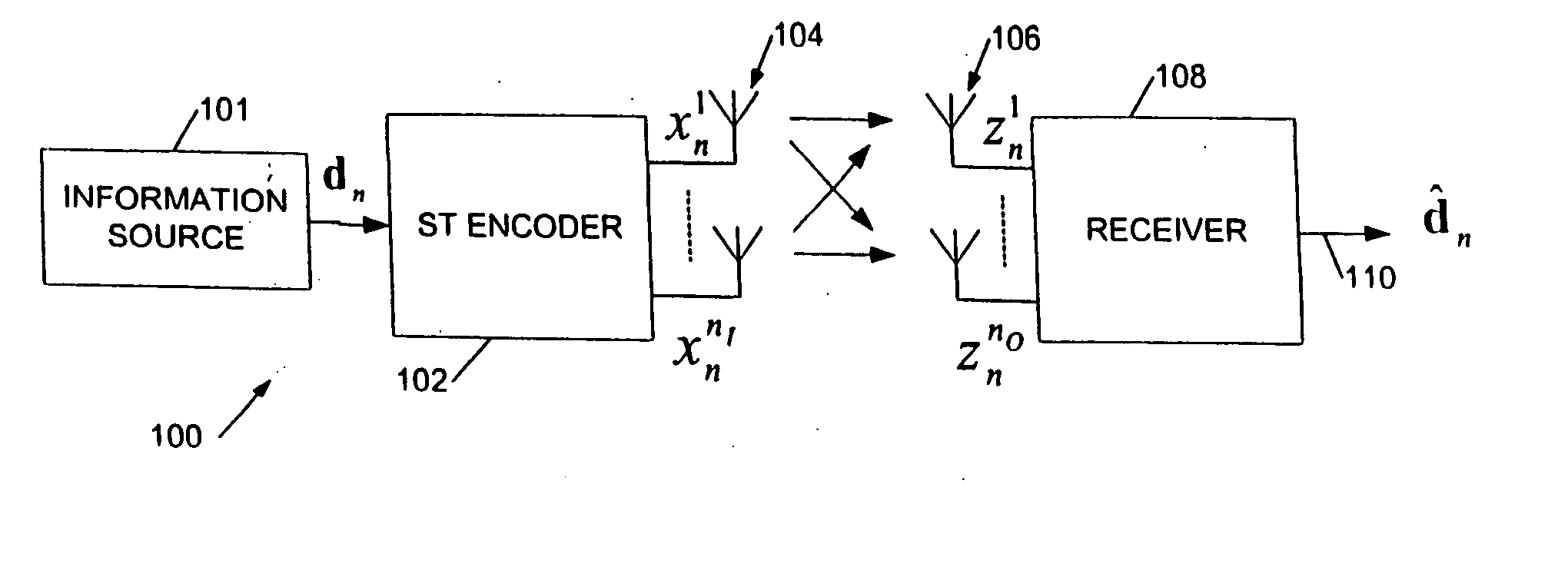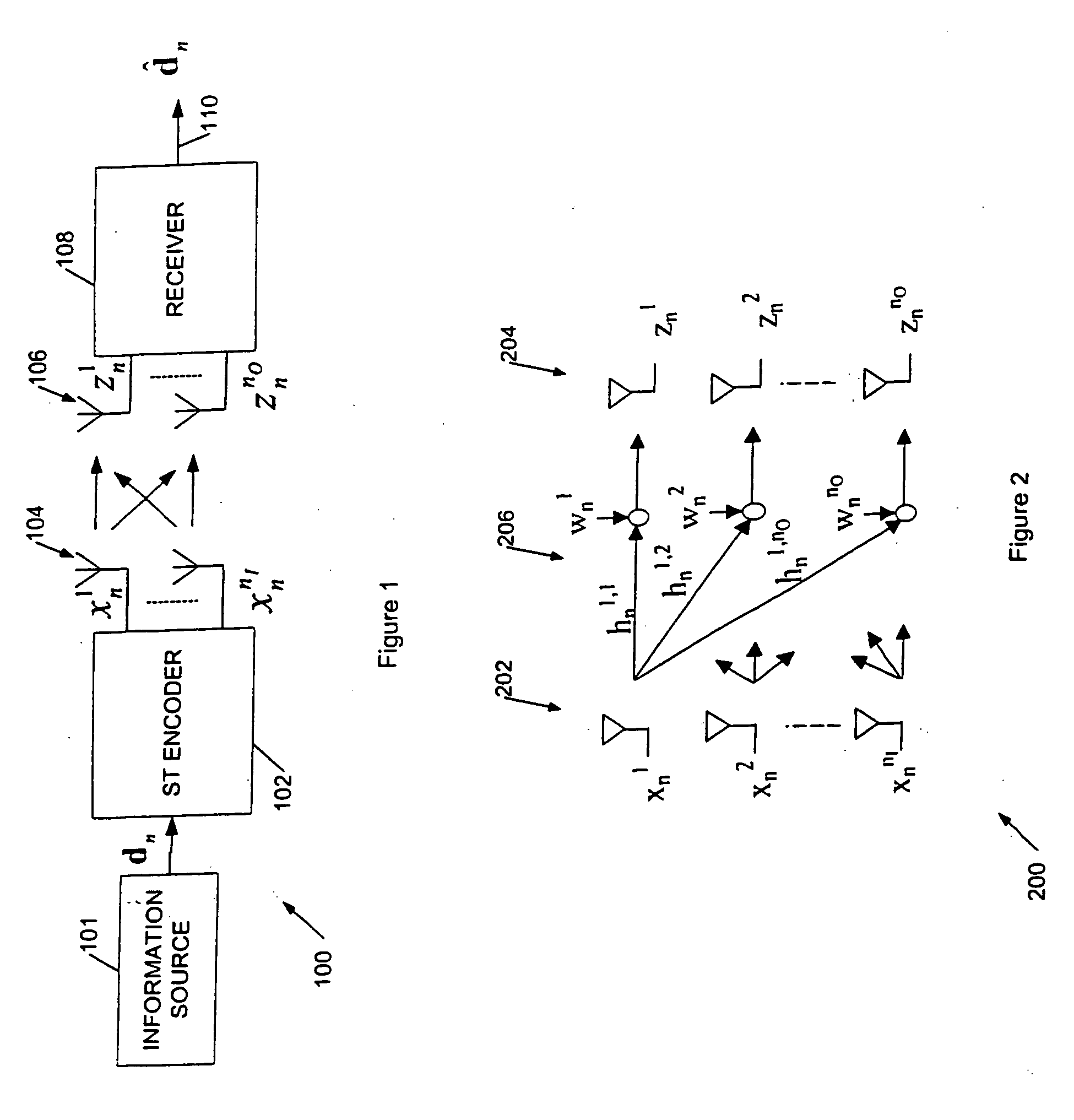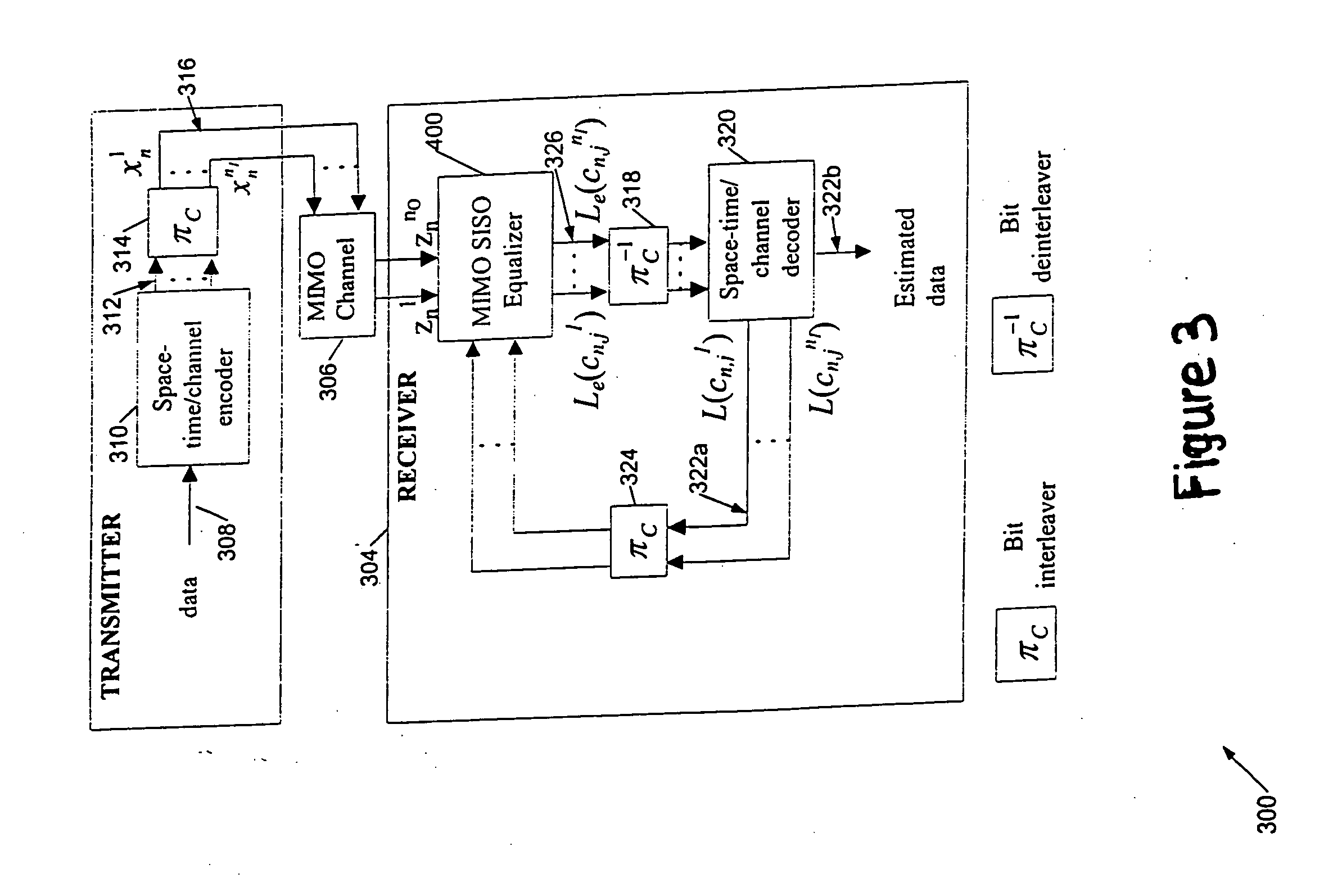Communications apparatus and methods
a technology of communication apparatus and methods, applied in multi-frequency code systems, multi-component communication, digital transmission, etc., can solve the problems of time code (stc) being susceptible to isi introduction, and achieve the effects of robust spatial diversity (and/or redundancy), low complexity decoding, and increased transmission ra
- Summary
- Abstract
- Description
- Claims
- Application Information
AI Technical Summary
Benefits of technology
Problems solved by technology
Method used
Image
Examples
Embodiment Construction
[0068]FIG. 1 shows a MIMO communication system 100. An information source 101 provides an information symbol dn at time n to a space-time encoder 102 which encodes the symbol as nI coded symbols xn1, xn2, . . . , xnnI each of which is transmitted simultaneously from one of transmit antennas 104. A plurality of nO receive antennas 106 receives respectively signals zn1, zn2, . . . , znnO which are input to receiver 108. The receiver 108 provides on output 110 an estimate {circumflex over (d)}n of the encoded transmitted symbol dn. There is a plurality of channels between the transmit and receive antennas, for example all channels with two transmit antennas and two receive antennas. Periodic pilot sequences in the transmitted signal can be used to estimate the time varying responses of these channels.
[0069] The coded symbols xn1, xn2, . . . , xnnI transmitted by the transmitter antennas 104 are typically encoded versions of the incoming data or information sequence. The encoding will ...
PUM
 Login to View More
Login to View More Abstract
Description
Claims
Application Information
 Login to View More
Login to View More - R&D
- Intellectual Property
- Life Sciences
- Materials
- Tech Scout
- Unparalleled Data Quality
- Higher Quality Content
- 60% Fewer Hallucinations
Browse by: Latest US Patents, China's latest patents, Technical Efficacy Thesaurus, Application Domain, Technology Topic, Popular Technical Reports.
© 2025 PatSnap. All rights reserved.Legal|Privacy policy|Modern Slavery Act Transparency Statement|Sitemap|About US| Contact US: help@patsnap.com



